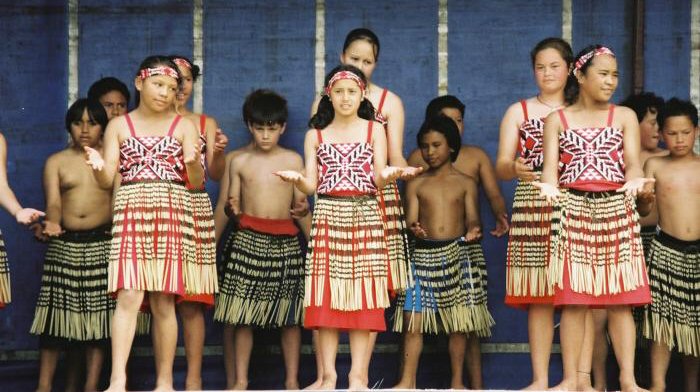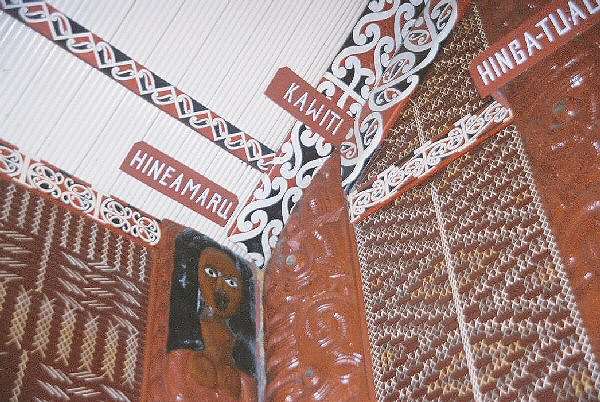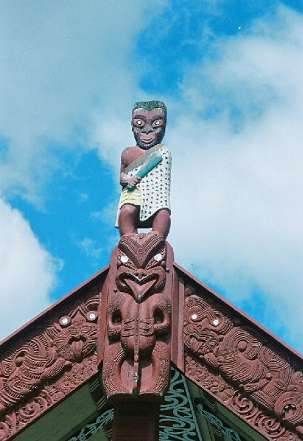| Links | Contact | Programs | Video |
Photo Gallery |
Indian Dance | About Yael | Homepage | |||
|
New Zealand: The People |
||||||||||
|
Aotearoa- “The Land of the Long White Cloud”, these are the two major Islands in the south Pacific known as New Zealand. The Māori tell ancient tales about the ancestor, who sailed from the homeland of Hawaiiki (and the place believed to be the source of life) on a waka, long wooden canoe. He came to Hawaiiki, describing Aotearoa as "a distant land, cloud-capped, with plenty of moisture, and a sweet-scented soil". The first Polynesian arrivals later on settled in the far north of New Zealand, at Hokianga. Māori tribes sailed on their waka on to Aotearoa from various directions (Asia through the Philippines, Indonesia, West Polynesia, and East Polynesia). They established their Pa (village) on shores of New Zealand, between the great kingdom of the ocean- a treasury of food and for village life matter (clothes, crafts etc.) and next to the rich rainforest- a hunter’s aspiration and source of fire. The staple food was kumara (sweet potatoes) augmented by other vegetables and fish and by shellfish, birds and eels, and in the south, moa and seal meat. Tribal boundaries were defined by major landmarks such as sacred mountains and rivers. In 1769, Captain James Cook circumnavigated the two main islands on the ship “Endeavour”. Cook found the Māori habits somewhat “primitive” and violent, as well as impressive and bravely spirited. He grasped this newfound land for the British crown. This put a change to the lifestyle of the islanders. For many years the Māori converted their lifestyle to the teaching of the English nation. The Māori traditions and means were close to extinct. The Treaty of Waitangi was signed (1840) between the settlers (Pakeha) and the Māori to overcome the different arguments. Those historical events have made a significant input to the development of the song and dance forms. It is the way of re-establishing the Māori identity for the tourism industry and for those who are brought up far from their cultural roots. |
||||||||||
|
|
|
|||||||||
|
New Zealand: The Dance - Kapa Haka |
||||||||||
|
Kapa Haka is the traditional tribal Dance of the Māori People on Aotearoa (New Zealand). The meaning of the term Kapa haka includes waiata-a-ringa (action songs), waiata tawhito (ancient songs that tell of historic events) and the use of poi (a swinging ball used to train for dexterity).
Various kinds of haka (war dance) were performed by Māori warriors
before battle to unite them in anger or courage, and to intimidate the
enemy, using weapons such as the patu (short club) and taiaha (fighting
staff). The dance always came with body movement and expression. Besides
wars, the dance also expresses the lifestyle of each era: activities
such as labour through food gathering, fishing, hunting, warfare, and
socialization through various rituals, contributed collectively to this
tradition; Whānau (family) celebrations, as well as inter-tribal visits,
provided the opportunity for Māori to entertain in dance forms telling
of past events, whakapapa (genealogy), heroes, death, landmarks, and
rituals.
|
||||||||||
 |
 |
|||||||||
|
Māori links: http://www.maori.org.nz/kapahaka/ http://www.nzqa.govt.nz/for-maori/resources/mpa/nmd/introduction.html |
View SlideShows on New Zealand:
|
|||||||||
|
Homepage About Yael Indian Dance Photo Gallery Programs Contact Links All Rights Reserved © Yael Tal |
||||||||||

